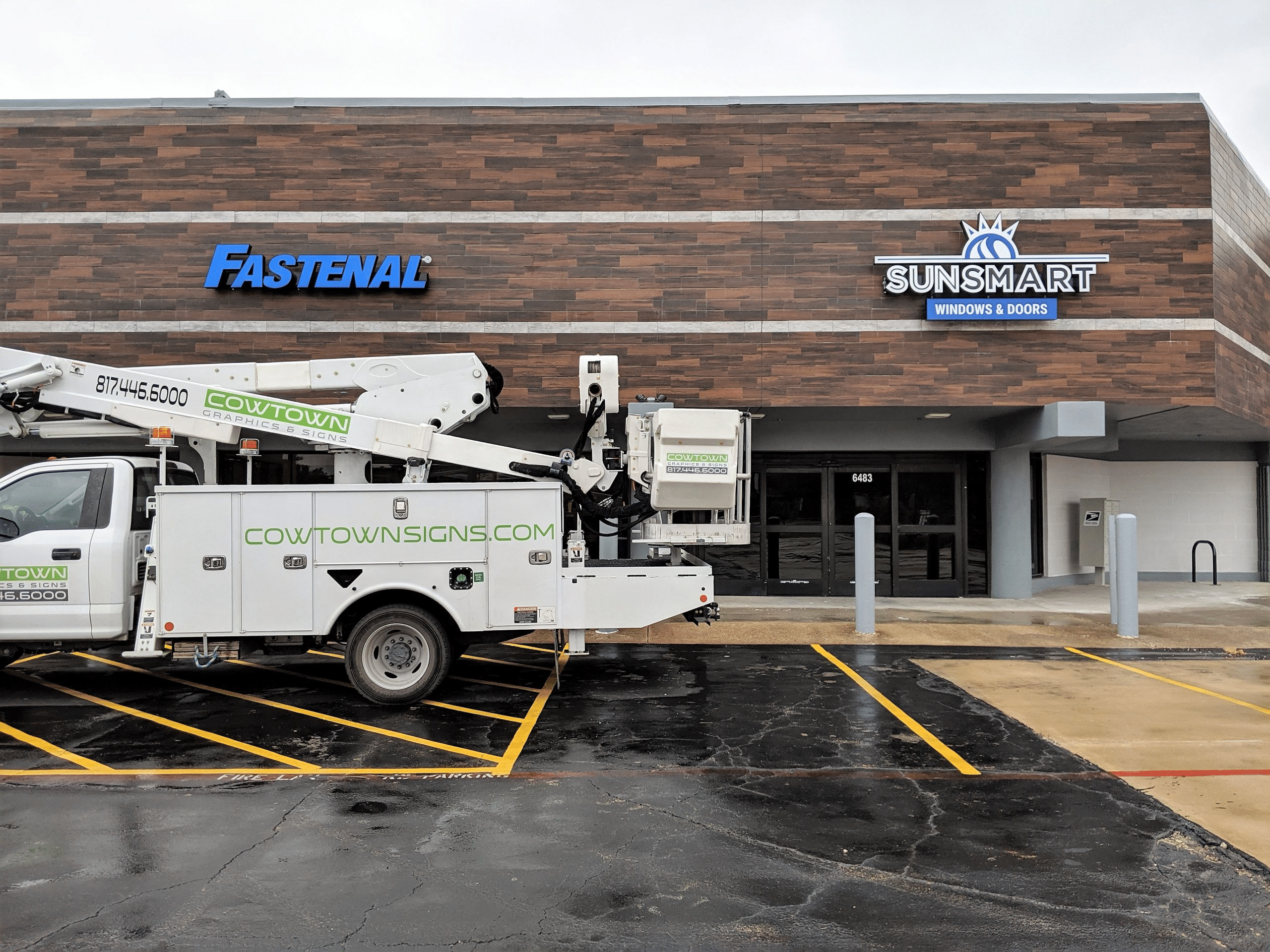Channel letters are among the most powerful graphic tools for visual branding. Whether on a monument sign or a building exterior, channel letters are flexible enough to display virtually any graphic message… safe and efficient enough for worry-free operation…and durable enough to represent a great long-term investment. To make the most of that investment, here are some questions you should consider on your own – and then talk over with your chosen graphics partner.
Is Your Location Suitable for Channel Letters?
A designer/installer can advise you on the approved types of channel letters for the zoning, commercial area and building you are considering. If you are not the building owner, check your lease for a Sign Criteria section. This may answer some questions for your design partner, or it can help them develop further questions for the building owner, shopping mall management or zoning authority.
What Types of Channel Letters are Available?
A standard channel letter starts with sheet metal (usually aluminum), cut to the shape of a letter. The three-dimensional effect of a channel letter is achieved by bending a strip of aluminum around the letter to form the sides, known as returns. Aluminum enhances the ability of channel letters to resist weather.
Next, the inside of this letter-shaped “can” is painted and illuminated, usually with light-emitting diodes (LEDs). Although other types of lighting can be used, modern LEDs are by far the most popular, as they are longer lasting, more energy-efficient and safer due to their low voltage.
Finally, a translucent face of translucent acrylic or polycarbonate is added to complete what is known as a face-lit assembly. This form is the most common, and is often the most visible at a distance.
For more visual drama, the designer can reverse the elements of the channel letter assembly, so that the face of the letter is aluminum and the back is translucent, creating a halo effect on the wall surface. This reverse-lit assembly allows the designer to highlight the color and texture of the building. A light- colored surface is best, while a dark or reflective surface may not be suitable.
Standard channel letter techniques can be combined or varied by the designer for a wide array of creative options. Some face-lit letters use the classic charm of neon instead of LEDs. Reverse-lit letters can use a combination of halo and translucent lighting. Face-lit letters can replace the translucent acrylic with perforated vinyl, so that the letter appears to be a solid color during the day and white at night. Extra text can be added to the display using flat acrylic lettering, and even the metal letters can be replaced with molded plastic in custom colors or with light-diffusing textures.
How are Channel Letters Mounted?
As you begin to discuss a channel letter installation, your design partner will need to fully understand the construction of your building wall, perhaps by drilling a couple of test holes. Depending on the type of wall and your design preferences, it may be best to direct-mount the letters, so that each letter has a wire coming through the wall to power the LEDs. Otherwise, your installation may require a raceway mount, in which all of the letters route their wiring through a shared aluminum mounting bar.
As noted, these choices will require you to accommodate all zoning regulations and any building owner requirements. In addition, the installation must conform to building codes for signage, which specify what types of attachment techniques and wiring methods must be used. Take some time also to look over the installation site with regard to trees and other obstructions, as the installer has specialized installation equipment and will need to plan access to your wall, perhaps at a significant height.
Will Channel Letters Accommodate Our Logo, Font and Corporate Colors?
Channel letters can render any logo, font or other shape that can be cut in metal from a vector-based art file. Wall or letter paint can be matched in any color, whether to align design elements with a corporate palette, or to help raceway hardware disappear against a building wall. Channel letters may be painted on the inside or outside, depending on the effect the designer needs to achieve.
With regard to the color of lighting, it is best to rely on the designer’s expertise. Corporate colors are important, but the first job of a sign is to be seen. White light is the most visible at a distance, followed by yellow, orange, light blue and red. Green is highly visible in daylight, but less so at night. An experienced sign advisor can show you how the paint and lighting elements of a channel letter installation can work together for the optimum combination of practical visibility — and branding impact.
What’s the Next Step?
Choose Cowtown Graphics & Signs as your visual branding partner. Estimates are FREE, so visit us online at www.cowtownsigns.com , or to speak with one of our expert advisors, call 817-446-6000.

